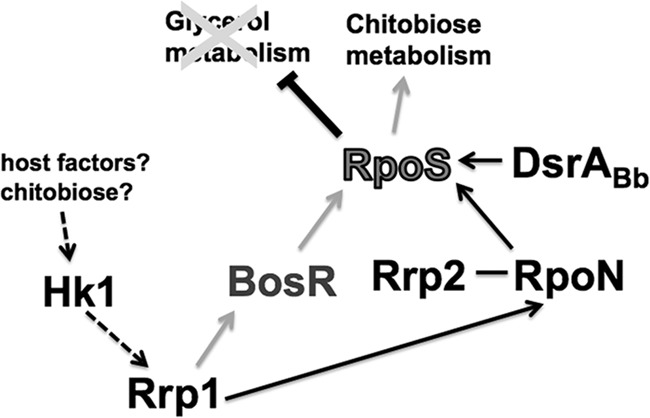Fig 9.

Model for Rrp1 regulation of chitobiose metabolism in B. burgdorferi. During the feeding process, certain host factors or chitobiose or both serve as a ligand(s) to activate the histidine kinase, Hk1, leading to phosphorylation of the response regulator, Rrp1. Phosphorylated Rrp1 activates BosR (the oxidative stress regulator) and RpoN, which then activate the transcription of rpoS. The expression of RpoS is further enhanced via the signaling by Rrp2-RpoN as well as other regulators such as DsrABb. An increase in the level of RpoS leads to repression of glycerol metabolism genes and activation of the components of the chitobiose metabolic pathway, especially the chitobiose transporter gene, chbC. Expression of the chitobiose utilization pathway allows B. burgdorferi to utilize chitobiose shed from the peritrophic membrane which is formed after a blood meal as a source for GlcNAc, a precursor for cell wall synthesis. A switch from glycerol to chitobiose for utilization as the main carbon source allows the spirochete to multiply in numbers and completes the transmission cycle.
